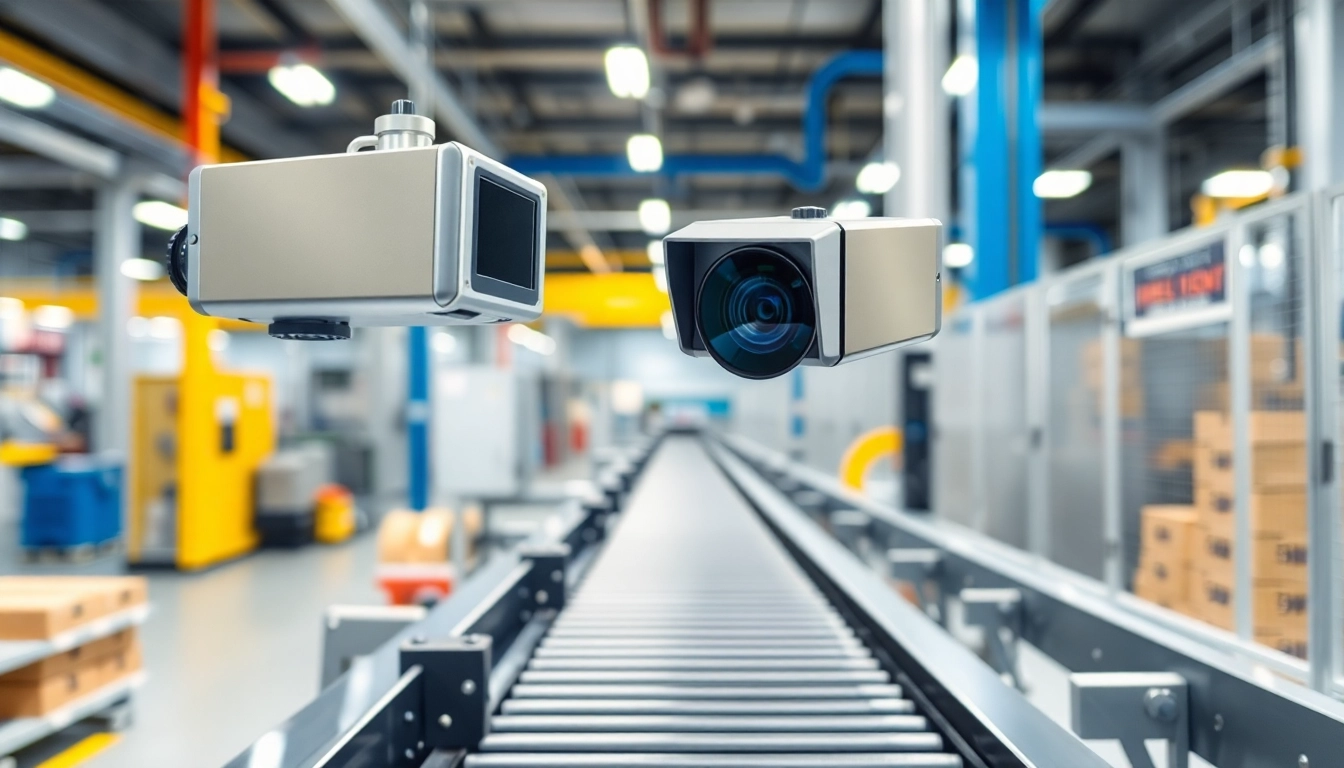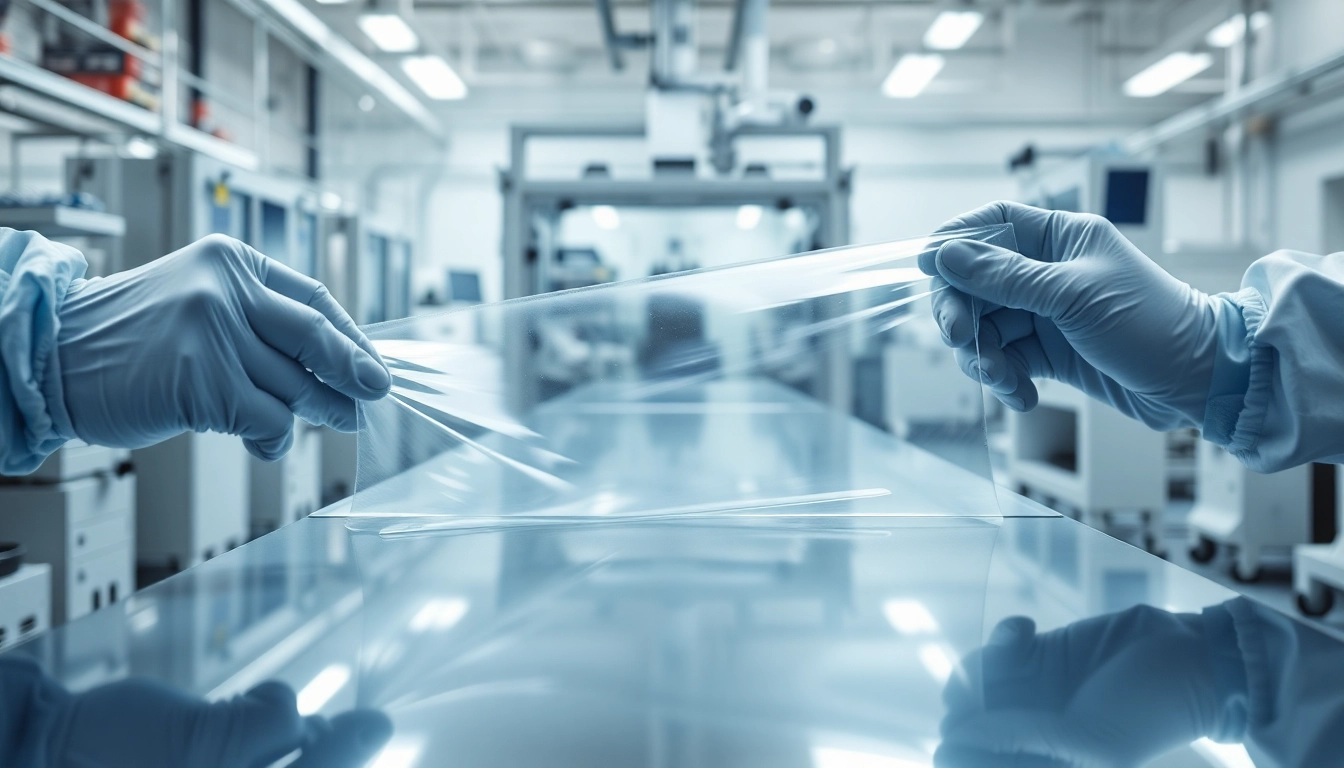What is Machine Vision?
Definition and Core Principles
Machine vision refers to the technology and techniques utilized by systems to interpret visual information from the world, enabling them to make automatic decisions based on what they see. A combination of hardware, such as cameras and sensors, along with sophisticated software algorithms is employed to achieve this capability. The primary goal of machine vision is to automate visual inspection and streamline decision-making processes across multiple industries.
At its core, machine vision encompasses four fundamental stages: image acquisition, image processing, feature extraction, and interpretative decision-making. During the image acquisition phase, high-quality images are captured from the environment using specialized cameras. The second stage, image processing, applies various algorithms to enhance the image or extract critical features such as edges, contours, or colors, thereby preparing the data for analysis. This process is followed by feature extraction, where the system identifies and quantifies relevant characteristics from the enhanced image. Finally, interpretative decision-making involves utilizing the processed data to make informed decisions or trigger specific actions.
How Machine Vision Works
The functionality of machine vision can be dissected into three main components: hardware, software, and algorithms. The hardware involved typically includes cameras, lighting systems, and processing units, which work together to capture digital images of objects or environments. For instance, industrial-grade cameras are often preferred for their ability to deliver high-resolution and high-speed image data.
On the software side, a variety of machine learning and computer vision algorithms are employed to conduct advanced analyses of images. These may include pattern recognition, statistical analysis, and neural network approaches, which help the systems learn from data and improve their accuracy over time.
Moreover, integration with artificial intelligence (AI) technologies is becoming increasingly common. By incorporating AI, machine vision systems can adapt to complex tasks, learn from new data, and make better decisions without human intervention. This is especially significant in applications where variability exists, such as in quality control where the appearance of products may differ slightly due to manufacturing tolerances.
Importance in Modern Industries
Machine vision plays a critical role across various sectors, presenting transformative impacts on productivity and efficiency. In manufacturing, for instance, machine vision systems are employed for quality inspection, reducing the dependency on manual inspection and speeding up production processes. Controlling quality consistently is crucial, as even minor imperfections can lead to significant financial losses or damaged reputations.
Other industries benefiting from machine vision include pharmaceuticals, food processing, automotive manufacturing, and electronics. In each of these sectors, machine vision assists in automating inspection processes, thereby enhancing accuracy while minimizing human error. This ability translates into improved product quality, regulatory compliance, and operational efficiency.
Applications of Machine Vision
Quality Control and Inspection
Quality control processes have witnessed a dramatic evolution thanks to machine vision technology. By automating inspection tasks, companies can ensure that products meet specific criteria without the variability typically associated with human assessments. For example, in the electronics industry, machine vision can be used to detect defects in circuit boards, ensuring that every component functions correctly before it is assembled into final products.
Furthermore, machine vision systems can accommodate high-speed inspections, which is fundamental in high-volume production settings. Real-time analytics allow manufacturers to detect anomalies during the production cycle, fostering better decision-making and immediate corrective actions before defective products reach the market.
Automated Processes in Manufacturing
Beyond quality control, machine vision also enhances other automated processes in manufacturing, such as sorting, grading, and assembly. In sorting, for example, machine vision technology can quickly distinguish between different products based on specified characteristics, thereby automating labor-intensive tasks.
In assembly lines, machine vision systems guide robotic arms, ensuring precise placement of components. This level of automation not only increases speed but also contributes to consistency in operations, thus reducing production errors.
The integration of machine vision with robotics has contributed significantly to the rise of smart manufacturing, where intelligent systems communicate and collaborate seamlessly to optimize production efficiency.
Role in Autonomous Systems
The evolution of autonomous systems is heavily reliant on machine vision technology. In the realm of automotive applications, machine vision provides critical input for self-driving vehicles that depend on accurate perception of the environment. Through a network of sensors and cameras, these vehicles interpret visual data to navigate, detect obstacles and make decisions in real-time.
Moreover, drone technology also leverages machine vision for applications such as surveillance, agricultural monitoring, and infrastructure inspection. Drones equipped with advanced imaging capabilities can analyze vast areas efficiently, performing complex tasks without human intervention. This capability is particularly beneficial in environments that are otherwise inaccessible or hazardous.
Benefits of Implementing Machine Vision
Increased Efficiency and Accuracy
The integration of machine vision in operational processes leads to remarkable enhancements in efficiency and accuracy. As systems automatically process visual data, the speed at which tasks are completed significantly increases, translating into faster production rates and reduced cycle times.
Furthermore, machine vision eliminates human error, ensuring that inspections are consistent and reliable. Automated inspections reduce the chances of overlooking defects, thereby ensuring that only the highest quality products reach consumers.
Industries that embrace machine vision report not only increased throughput but also improved worker safety, as fewer personnel are required on factory floors, minimizing exposure to hazardous environments.
Cost Reduction Over Time
The initial investment in machine vision technology can be substantial; however, organizations often realize significant cost reductions over time. By minimizing waste due to defects and downtime from manual inspection processes, companies can maintain higher profit margins. Additionally, the speed increases brought about by automation often allow businesses to scale up production without additional labor costs.
Moreover, maintenance of equipment can be managed proactively with machine vision systems, as they can detect signs of wear or malfunction. This predictive maintenance reduces unexpected downtime and extends the lifecycle of machinery, ultimately lowering operational costs.
Enhancements in Product Quality
One of the standout benefits of machine vision technology is its ability to consistently enhance product quality. By implementing rigorous inspection protocols and monitoring production processes in real-time, businesses can maintain compliance with industry standards and regulatory requirements.
In addition to improving overall product quality, machine vision allows organizations to create more reliable and consistent products, thereby increasing customer satisfaction and loyalty. As market expectations rise, companies equipped with machine vision capabilities are better positioned to meet these demands effectively.
Types of Machine Vision Systems
1D, 2D, and 3D Systems Explained
Machine vision systems generally fall into three primary categories: 1D, 2D, and 3D systems. Each type is designed for specific applications based on the complexity and requirements of the task at hand.
1D machine vision systems primarily deal with line scans for applications such as barcode scanning. They are typically used in high-speed production environments to capture linear information such as text or codes.
2D systems provide a flat representation of images, making them suitable for most inspection tasks that require detailed analysis of surfaces or components. These systems can also incorporate techniques for image processing and feature extraction based on 2D data.
3D machine vision systems are employed to create depth perception, analyzing objects in three dimensions. This capability is especially useful in applications where precise positioning, orientation, and volume measurement are critical, such as in robotics and autonomous navigation.
Comparative Analysis with Computer Vision
While often used interchangeably, machine vision and computer vision serve distinct purposes. Machine vision is largely focused on industrial applications, facilitating automated inspection, measurement, and analysis. On the other hand, computer vision encompasses broader domains that include areas like facial recognition, augmented reality, and natural language processing.
In practical terms, machine vision systems are equipped to handle highly repetitive tasks that demand reliability and speed, whereas computer vision applications may leverage advanced learning techniques to interpret and respond to complex visual stimuli. Understanding these distinctions is critical for businesses seeking to implement the appropriate technology for their needs.
Emerging Technologies and Trends
The field of machine vision continuously evolves, introducing new technologies and trends that reshape its capabilities. Recent advancements include the integration of deep learning and artificial intelligence, fostering the development of smarter systems that can learn and adapt to new conditions over time. Additionally, the rise of edge computing allows for processing data closer to where it is captured, reducing latency and enhancing real-time decision-making.
Moreover, the increasing affordability and accessibility of advanced imaging technology, such as high-resolution cameras and sophisticated processing hardware, is further facilitating the adoption of machine vision across smaller enterprises and various industries.
As these trends continue to unfold, organizations that remain abreast of emerging technologies related to machine vision will be better positioned to innovate, compete, and thrive in the rapidly advancing technological landscape.
Best Practices for Implementing Machine Vision
Choosing the Right Technology
Choosing the appropriate machine vision system necessitates careful evaluation of organizational needs and objectives. Companies must begin by assessing the specific applications they wish to automate, the environment in which the system will operate, and the expected outcomes of implementing machine vision.
Key considerations include resolution requirements, lighting conditions, processing speed, and compatibility with existing machinery. Engaging with technology providers or experts can enhance the selection process, ensuring organizations adopt the most suitable technologies tailored to their unique needs.
Integration into Existing Processes
Integrating machine vision systems into existing workflows can often pose challenges. A strategic approach is warranted to facilitate smooth transitions, which may involve starting with pilot programs to assess the effectiveness of the technology before full-scale implementation. Careful planning enables businesses to minimize disruptions while allowing for gradual enhancements in productivity and accuracy.
Training personnel on the new systems is also crucial to maximize the effectiveness of the technology. Operators should have a clear understanding of how to use the machine vision systems and how these systems interact with existing processes.
Monitoring and Optimizing Performance
Once implemented, continuous monitoring and optimization of machine vision systems are essential to ensure they operate effectively and deliver desired outcomes. Regular data analysis can uncover insights that drive operational efficiencies and identify areas for further improvement.
Establishing key performance indicators (KPIs) allows organizations to measure the success of their machine vision systems quantitatively. Metrics such as defect rates, production speed, and overall equipment effectiveness provide valuable information enabling data-driven decision-making.
Through ongoing adjustments and enhancements, companies can maximize the benefits of their machine vision investments, ensuring they remain competitive and responsive to evolving manufacturing demands.



